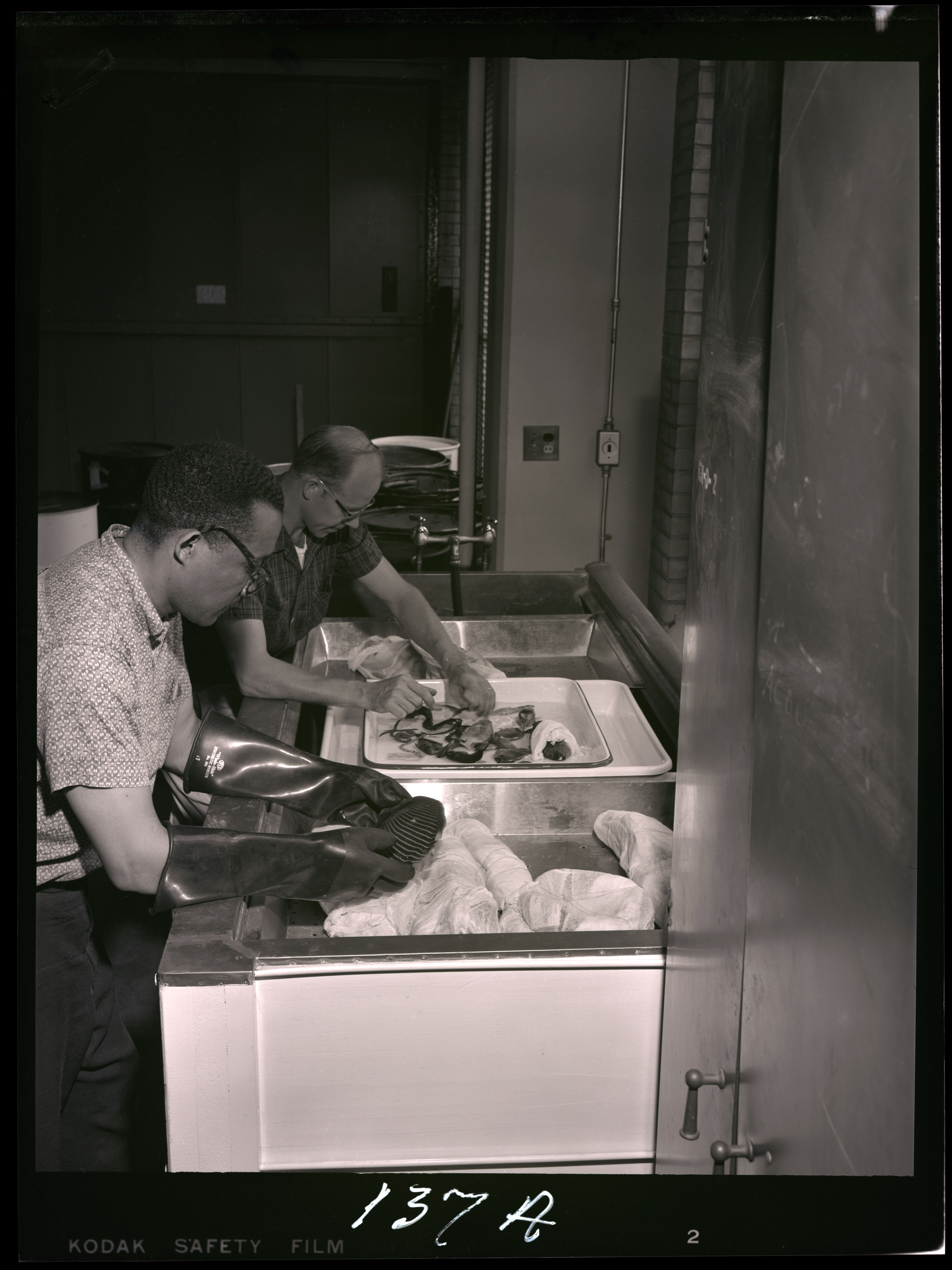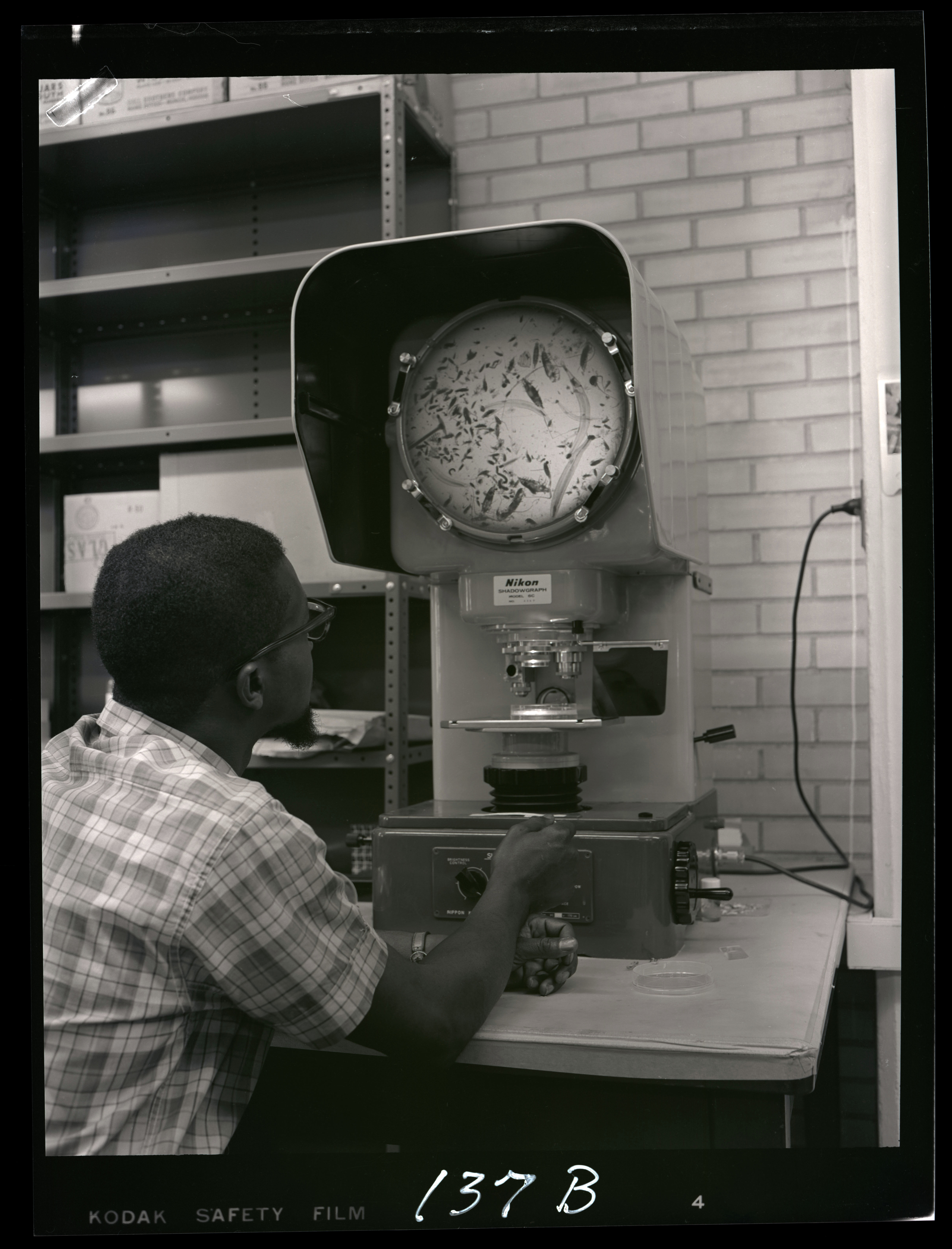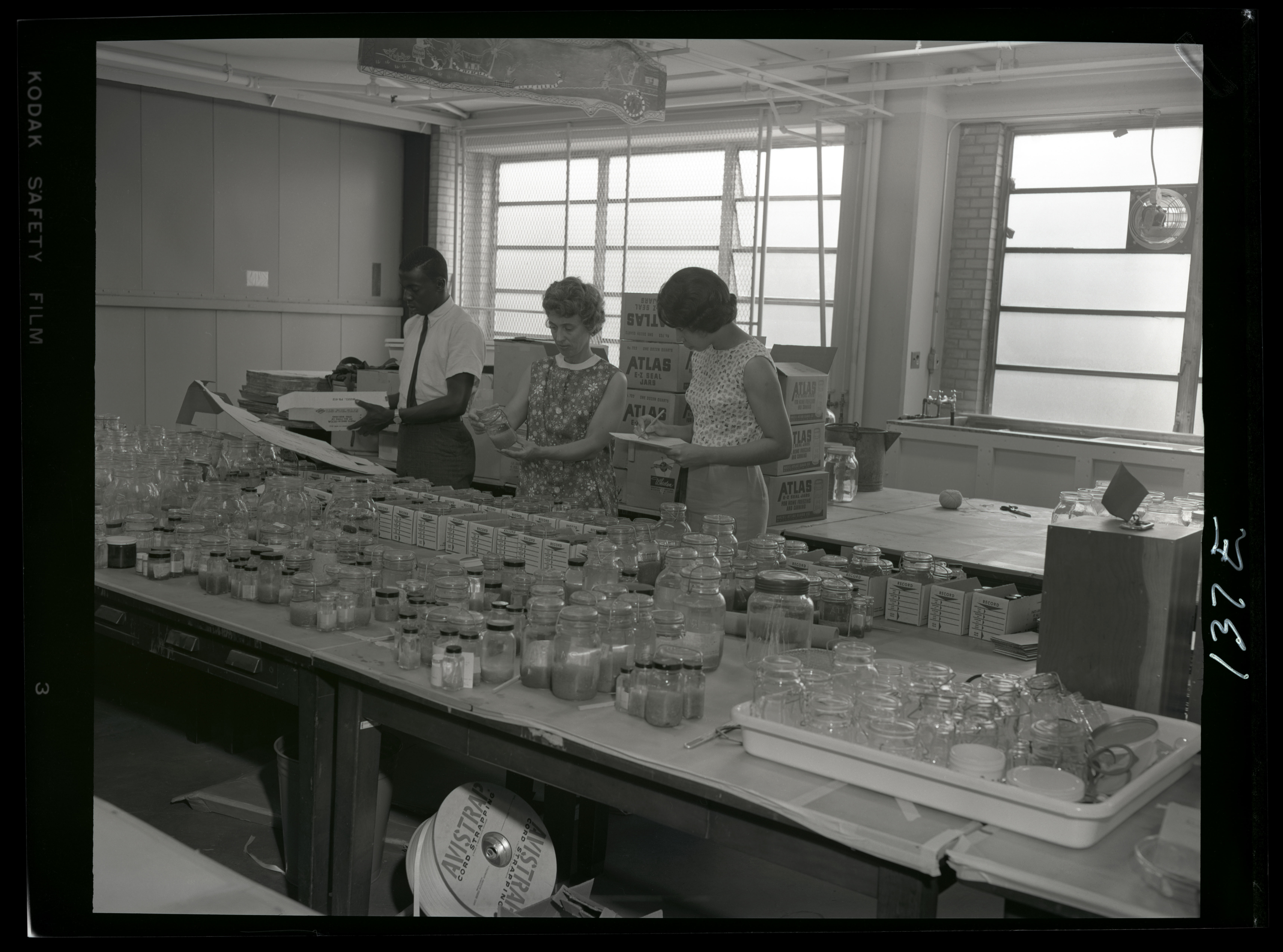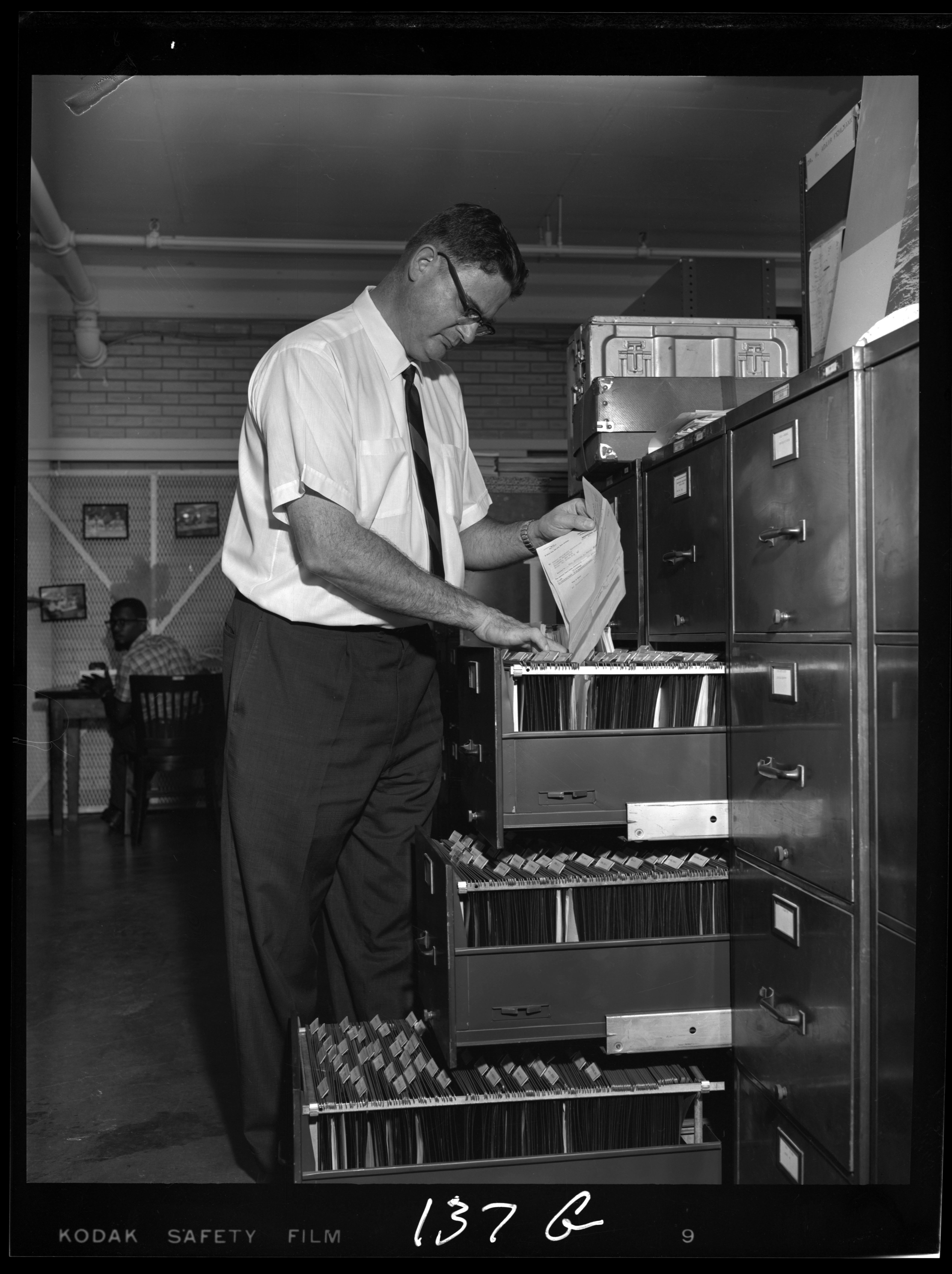The Smithsonian has a rich history of collecting and studying oceanography that dates back to the United States Exploring Expedition (1838-1842). Led by the U.S. Navy, explorers and scientists circumnavigated the globe, producing an abundance of data and gathering specimens, many of which would become some of the first scientific collections at the Smithsonian, including a bounty of marine animals and plants. Since our earliest days, Smithsonian scientists have received, stored, and studied oceanographic collections, while also maintaining relationships with other oceanographic research organizations, universities, and governmental agencies.
In 1962, the Smithsonian Oceanographic Sorting Center (SOSC) was established by the Oceanography and Limnology Program of the National Museum of Natural History to serve as a temporary repository and sorting and distribution center for marine specimens expected to be gathered during the International Indian Ocean Expedition (1959-1965), a multinational research effort sponsored by the Intergovernmental Oceanographic Commission. The center’s purpose was to aid and advance ocean studies by employing systematic methods to accommodate bulk processing of natural history collections and to manage the distribution of sorted materials to marine scientists all over the world. Specimens gathered on oceanic expeditions were sent to SOSC, where they would be preserved, labeled, identified, packaged, and shipped.
The center worked to streamline the practice of collecting and processing large amounts of ocean material. Staff created standardized record forms that required specific data fields to be filled out at the time specimens were collected. Contributors were trained by SOSC in preferred collection and preservation techniques and were provided shipping containers and other supplies to ensure biological specimens were properly handled and stored. Upon arrival at SOSC, each sample was assigned a reference number and selected for either sorting activities or shipment to another scientific agency. Specimens in the sorting queue were carefully packaged and organized into their biological classification.
In operation until 1992, the Smithsonian Oceanographic Sorting Center had a tremendous impact on the study of oceanography. Millions of specimens were processed and shipped by SOSC during its 30-year tenure, benefiting scientists worldwide. See below for a group of images of staff at work processing marine material at the SOSC facility in Washington, D.C.'s Navy Yard annex.
Related Collections:
Smithsonian Oceanographic Sorting Center Records, circa 1962-1992, Record Unit 610, Smithsonian Institution Archives
Related Resources:
“The Smithsonian Oceanographic Sorting Center,” by I.E. Wallen, H.A. Fehlmann, and Cynthia Stoertz, Journal of the Washington Academy of Sciences, Vol. 58, No. 8, November 1968, p. 191-200.
“The Smithsonian Oceanographic Sorting Center: Staff of the Smithsonian Oceanographic Sorting Center,” The Science Teacher, Vol. 36, No. 3, March 1969, p. 29-31.
Produced by the Smithsonian Institution Archives. For copyright questions, please see the Terms of Use.










Leave a Comment